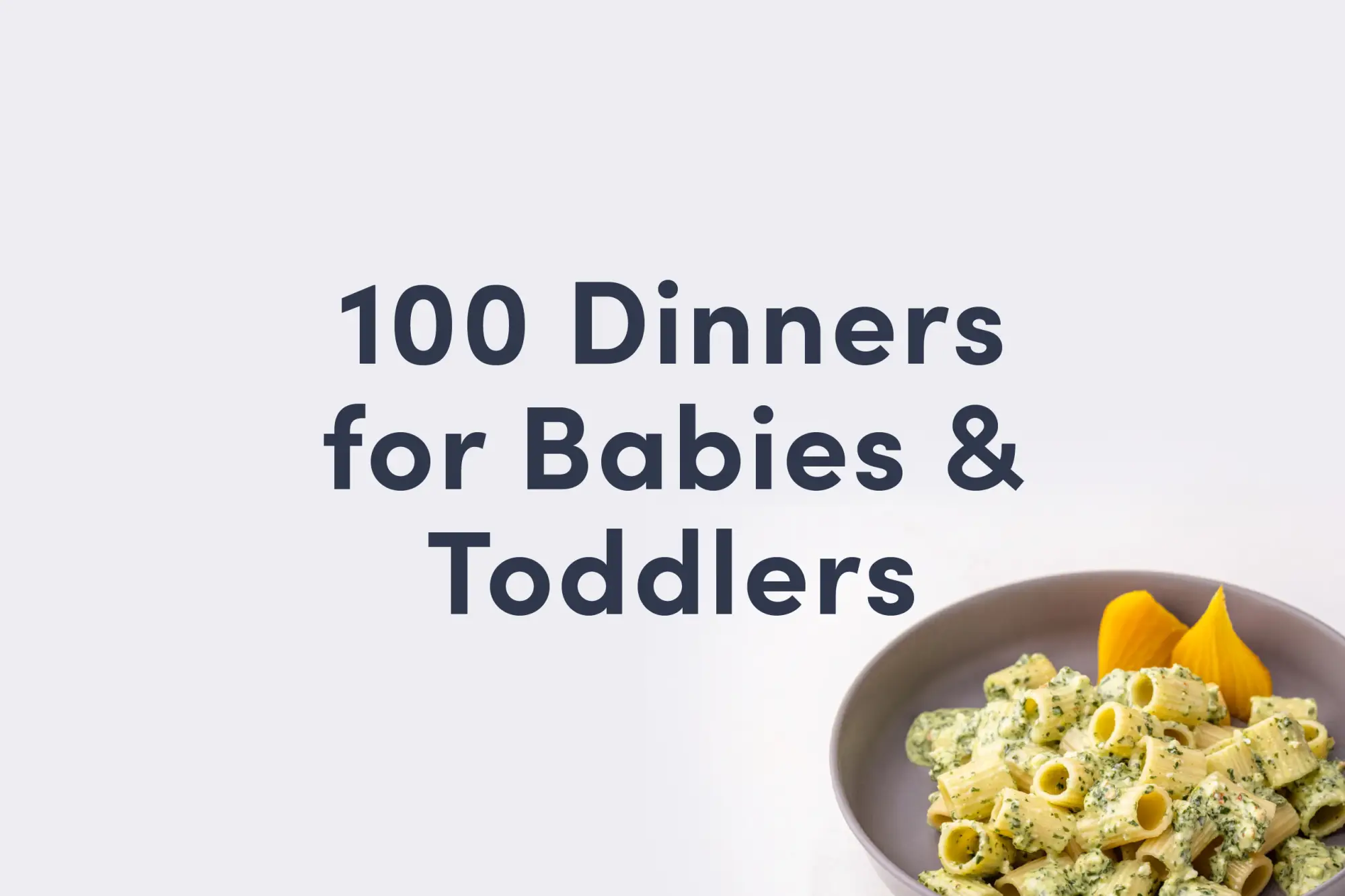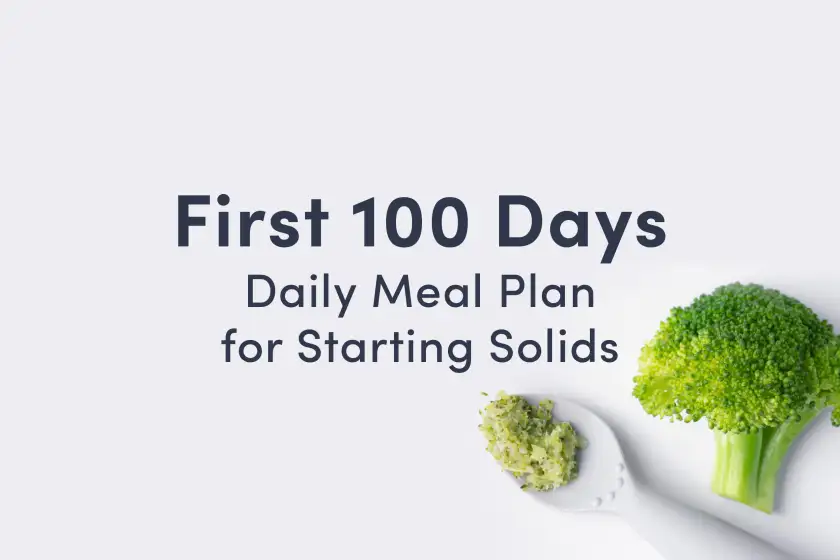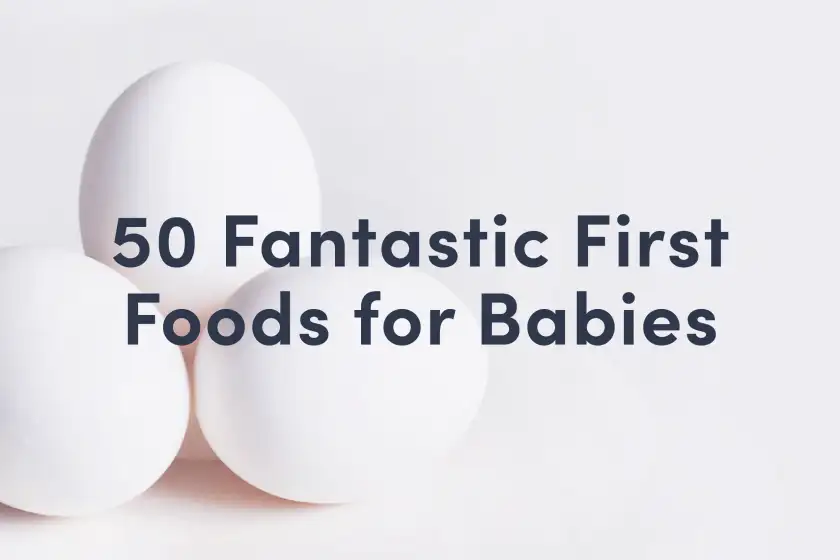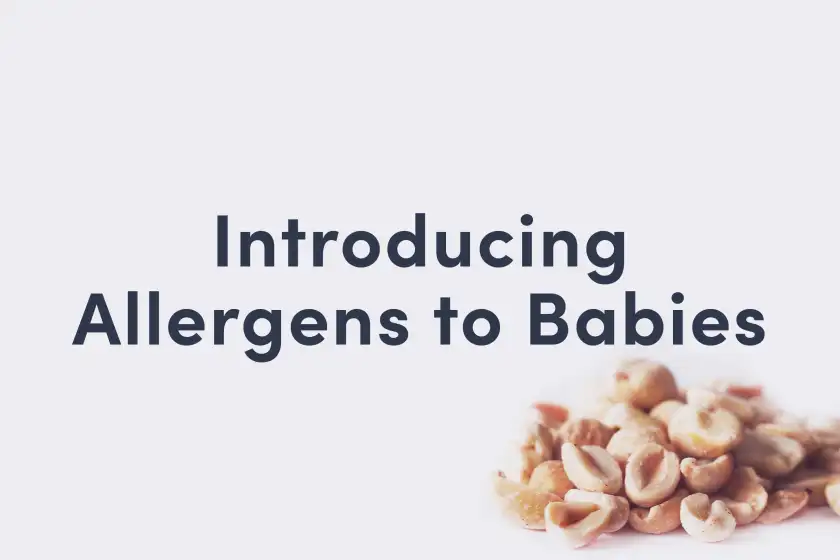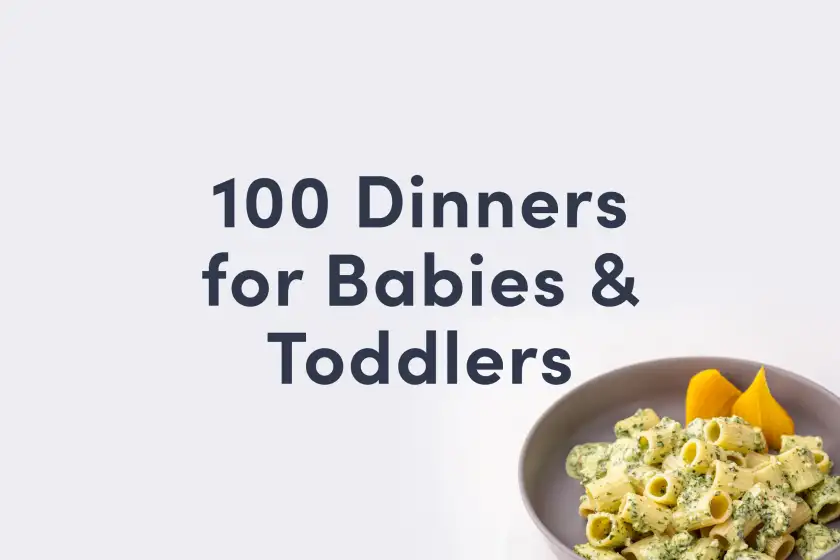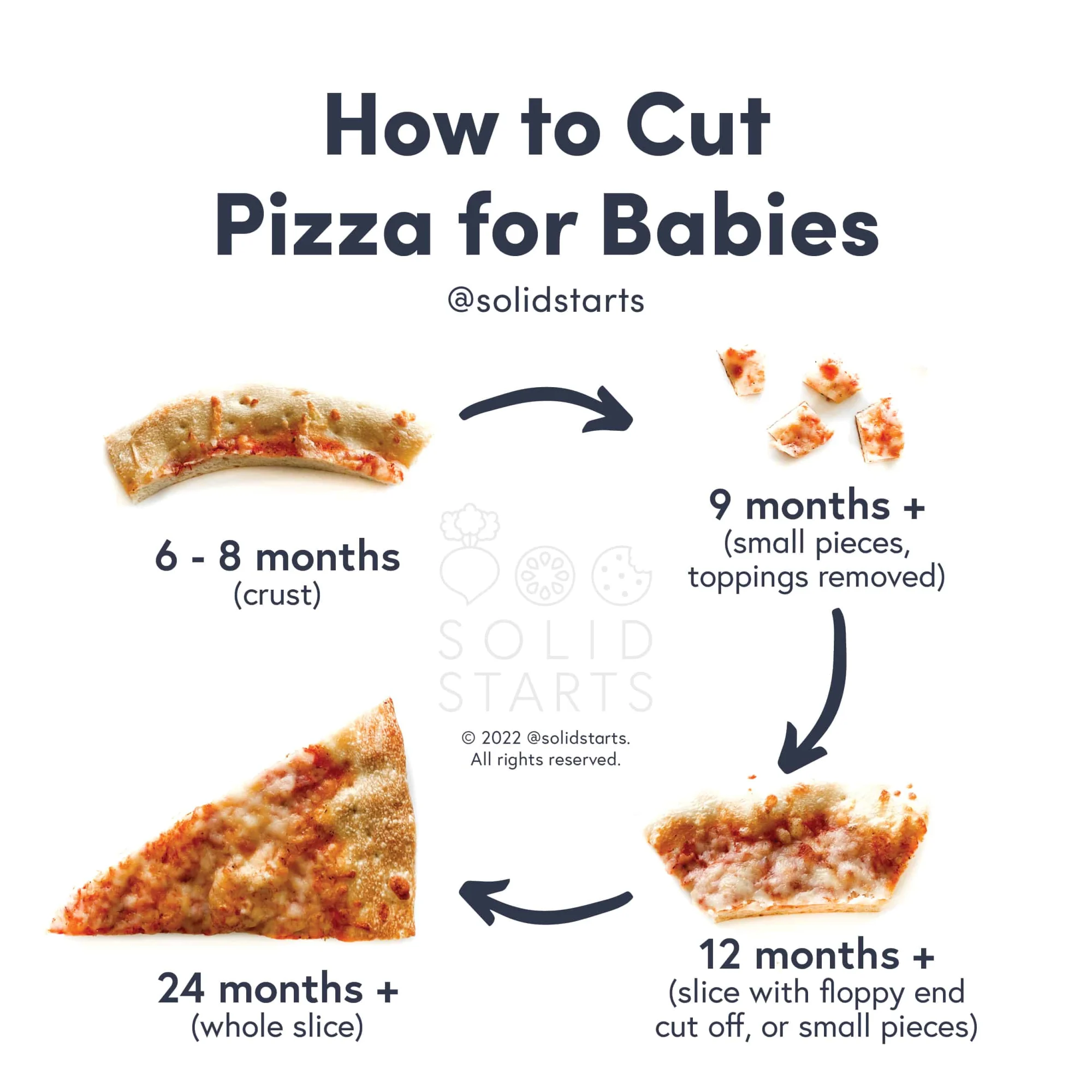Pizza
Prepared
Age Suggestion
6 months
Iron-Rich
No
Common Allergen
Yes

When can babies have pizza?
Pizza, when served in an age-appropriate way to reduce choking risk, may be introduced as soon baby is ready to start solids, which is generally around 6 months of age. Because pizza tends to be high in sodium, aim to offer in moderation, but know that serving on occasion is fine. Pizza typically contains dairy, wheat, and other common food allergens, so make sure these have been safely introduced before offering pizza. Finally, avoid pizza that contains honey until 12 months of age, due to the risk of infant botulism.
The word “pizza” may conjure an image of doughy bread topped with tomato sauce, but around the Mediterranean Sea, where humans have been making pizza since ancient times, this flatbread was originally dressed simply with cheese, herbs, and olive oil. Immigrants brought pizza-making traditions with them to the United States, and eventually demand exploded after World War II with the rise of international migration and tourism.
Is pizza safe for babies?
Yes. As long as it is modified for baby’s age and eating ability and any common food allergens have been safely introduced, it is generally fine to share pizza as one part of a variety of food in the diet over time. Keep in mind that some pizza doughs, sauces, and toppings contain honey, which should be avoided during the first year of life due to the risk of infant botulism. Also, the crust, cheese, and many toppings can be choking hazards, so read on to learn how to offer pizza in an age-appropriate way.
Which type of pizza is best for babies and kids?
Ultimately, the best pizza is the one that fits your culture and family’s food preferences. Sharing a meal as a family can be more important than the food’s nutritional value alone. That said, depending on the type, pizza can offer many of the nutrients that young children need. For example, a margherita pizza (topped with olive oil, tomato sauce, fresh mozzarella cheese, and basil) offers carbohydrates, protein, and fat; as well as micronutrients like calcium, iron, zinc, and vitamins A and E, in addition to various B vitamins. Pizza can be high in sodium, but sharing meals, even if those meals contain some salt, can bring baby into their family food culture as soon as they are ready to start solids, which has other benefits. Family meals are opportunities for baby to explore a wide variety of food, practice eating food with different colors, flavors, and textures, and get comfortable with food that you like to eat.
Does pizza contain common allergens?
Yes. At a minimum, pizza may contain dairy (cheese) and wheat, both of which are common food allergens. Depending on the recipe, pizza may also include egg, fish such as anchovies, shellfish, tree nuts (pesto), sesame, and soy. Prior to sharing pizza with baby, it is important to introduce common food allergens on their own and rule them out as an allergy before serving them together in a prepared food like pizza. This way, you’ll be able to identify which allergen is responsible if baby has a reaction. Then, when you are ready to offer pizza, you will be confident that they have already safely eaten any allergens in the food.
Is pizza a choking hazard for babies?
Yes. Thick pieces of pizza crust, globs of cheese, and various toppings are difficult to chew and may become gummy in baby’s mouth, qualities that increase the risk of choking. To reduce the risk, prepare and serve pizza in an age-appropriate way. As always, make sure you create a safe eating environment and stay within an arm’s reach of baby during meals.
Learn the signs of choking and gagging and more about choking first aid in our free guides, Infant Rescue and Toddler Rescue.
Videos
Which kind of pizza do kids like best?
Every child is different, but generally, kids tend to enjoy pizza when it has familiar toppings that they know and like. Kids also like pizza that looks fun and interesting: imagine a smiley face made out of sliced mushrooms, a rainbow made of sliced vegetables, a forest of broccoli florets with a path made of olive rings, or red-and-white stripes made of fresh mozzarella slices laid over tomato sauce. Inviting toddlers to help make pizza at home or choose toppings when ordering take-out can also boost their interest. Finally, sharing meals as a family is a great way to help develop a child’s love for a food: the pizza your child likes best may be whichever one they eat alongside you.
Picky eating tips for interesting kids in pizza
If a child is hesitant to try pizza or is only willing to eat plain cheese pizza, try inviting them to help make the meal. When ordering take-out pizza, tell the child the options for toppings, and let the child decide which ones to order. When making pizza from scratch or adding toppings to a pre-made crust, encourage the child to choose the toppings for their portion or let them top the pizza themselves. At the table, offer additional toppings for the child to sprinkle, like shredded basil, crumbled goat cheese, or nutritional yeast. Or, try engaging the child’s imagination: ask them what kind of pizza they would make if they had any ingredients they wanted. What fun combinations can they think up?
How do you serve pizza to babies and kids?
Every baby develops on their own timeline, and the suggestions on how to cut or prepare particular foods are generalizations for a broad audience.
6 months old +:
Offer a long piece of pizza crust as a food teether for baby to munch on. Look for pizza that has a firm crust that won’t snap or break off easily in baby’s mouth and go big in size. This works with pizzas that have bready doughs, not thin, cracker-like crusts. While baby won’t get food in the belly this way, teething on pizza crust can stimulate the reflexes that let baby practice chewing and help the child develop a mental map of the mouth. Alternatively, you can peel off age-appropriate toppings to share with baby, like soft, well-cooked slices of vegetables. Note that some pizza contains honey in the crust, sauce, or toppings. Honey should be avoided during the first year of life due to the risk of infant botulism.
9 months old +:
Serve small, bite-sized pieces of the pizza slice, with globs of cheese and firm toppings removed (such as cubes of meat, pieces of pineapple, large crumbles of sausage, etc.), as they continue to pose a choking risk. To further reduce the risk of choking, you can remove all toppings and cheese from the bite-sized pieces. You can also continue to offer just the crust, but know that at this age, many babies have the skills to bite off pieces that can get stuck to the roof of their mouth, causing some gagging. Note that some pizza contains honey in the crust, sauce, or toppings. Honey should be avoided during the first year of life due to the risk of infant botulism.
12 months old +:
If you feel confident in the child’s biting and tearing skills, present a slice of pizza with the tip cut off (so it’s not too floppy). Note that softer, thinner pieces of pizza can glom up in the mouth and cause some gagging. When serving pizza to toddlers, avoid stuffed pizza crusts, as the melted cheese inside the stuffed crust heightens choking risk. You can also continue to serve small, bite-sized pieces of the pizza slice with challenging-to-chew toppings removed. If a child is routinely over-stuffing their mouth, offer fewer bite-size pieces at a time.
24 months old +:
At this age, many toddlers are able to handle a whole slice of pizza with toppings. If any toppings look too challenging for the child simply peel them off and suggest those be eaten separately. Mixed textures can be difficult for early eaters, so try to present challenging pieces of topping apart from the pizza slice in order to practice chewing separately.
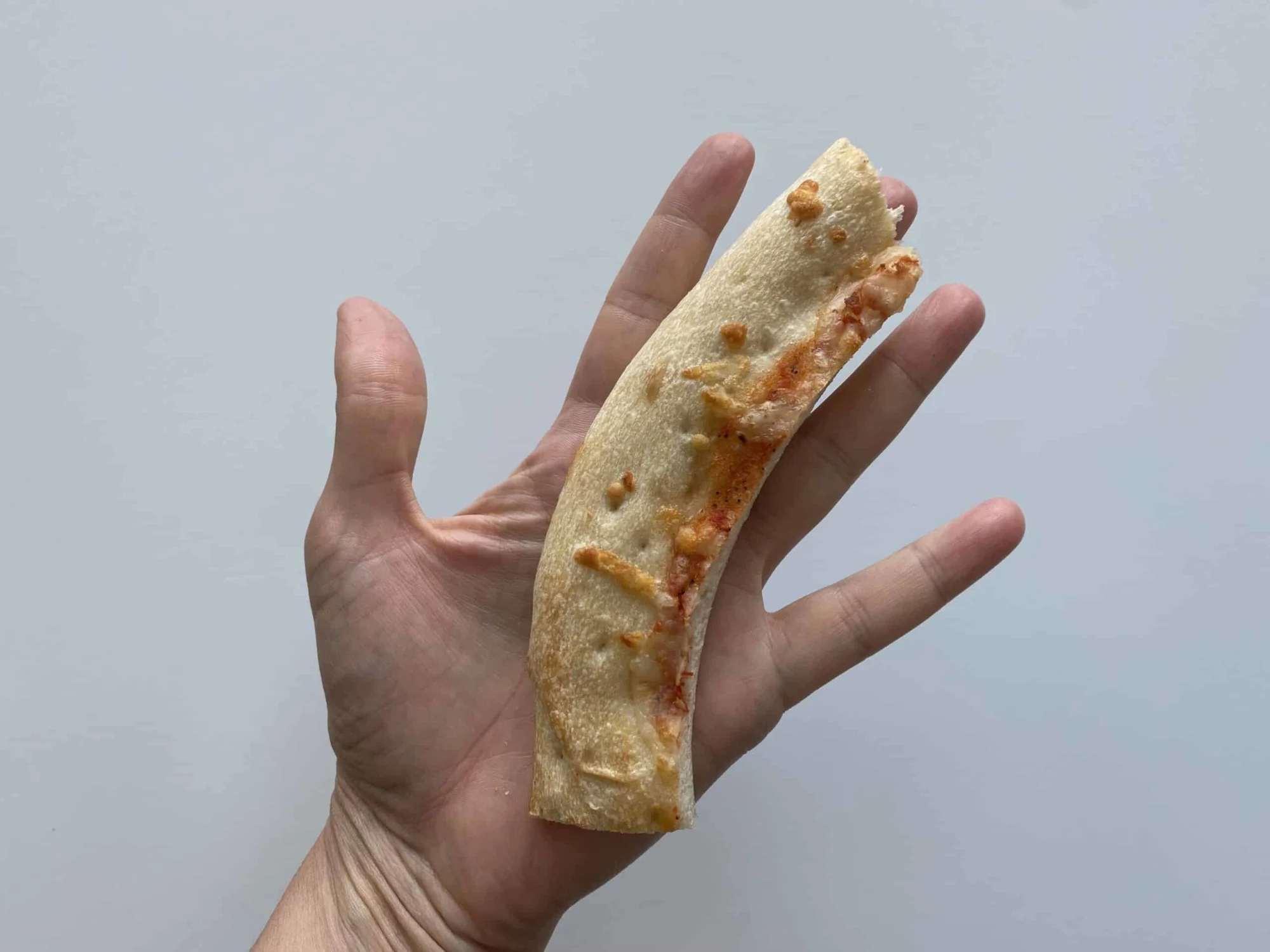
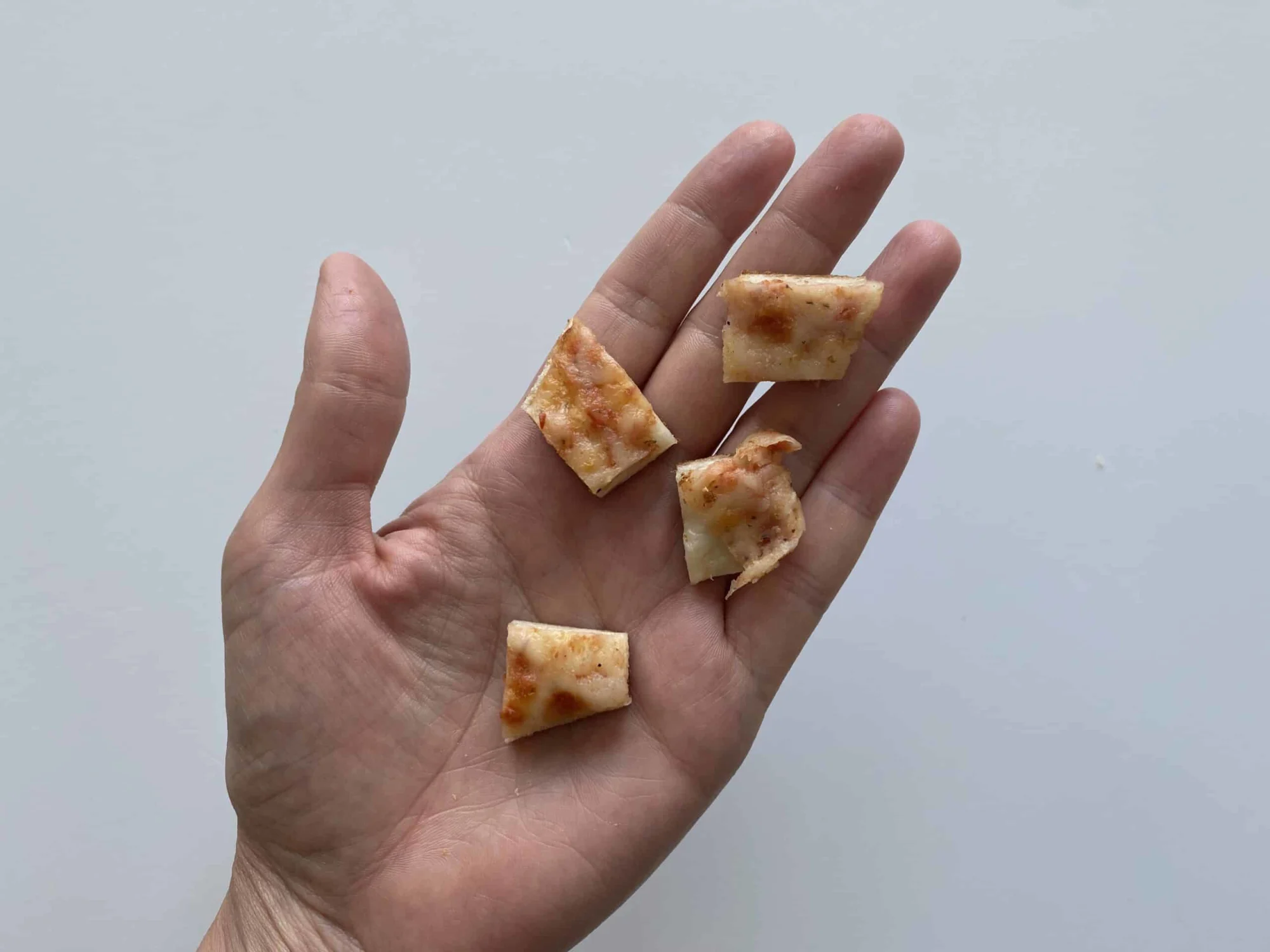
Prevent picky eating, help foster your child's independence, and much more with our Toddlers at the Table bundle.
Written by
Expert Tips Delivered to Your Inbox
Sign up for weekly tips, recipes and more!
The content offered on SolidStarts.com is for informational purposes only. Solidstarts is not engaged in rendering professional advice, whether medical or otherwise, to individual users or their children or families. No content on this site, regardless of date, should ever be used as a substitute for direct medical advice from your doctor or your medical or health professional, nutritionist, or expert in pediatric feeding and eating. By accessing the content on SolidStarts.com, you acknowledge and agree that you are accepting the responsibility for your child’s health and well-being. In return for providing you with an array of content “baby-led weaning” information, you waive any claims that you or your child may have as a result of utilizing the content on SolidStarts.com.

